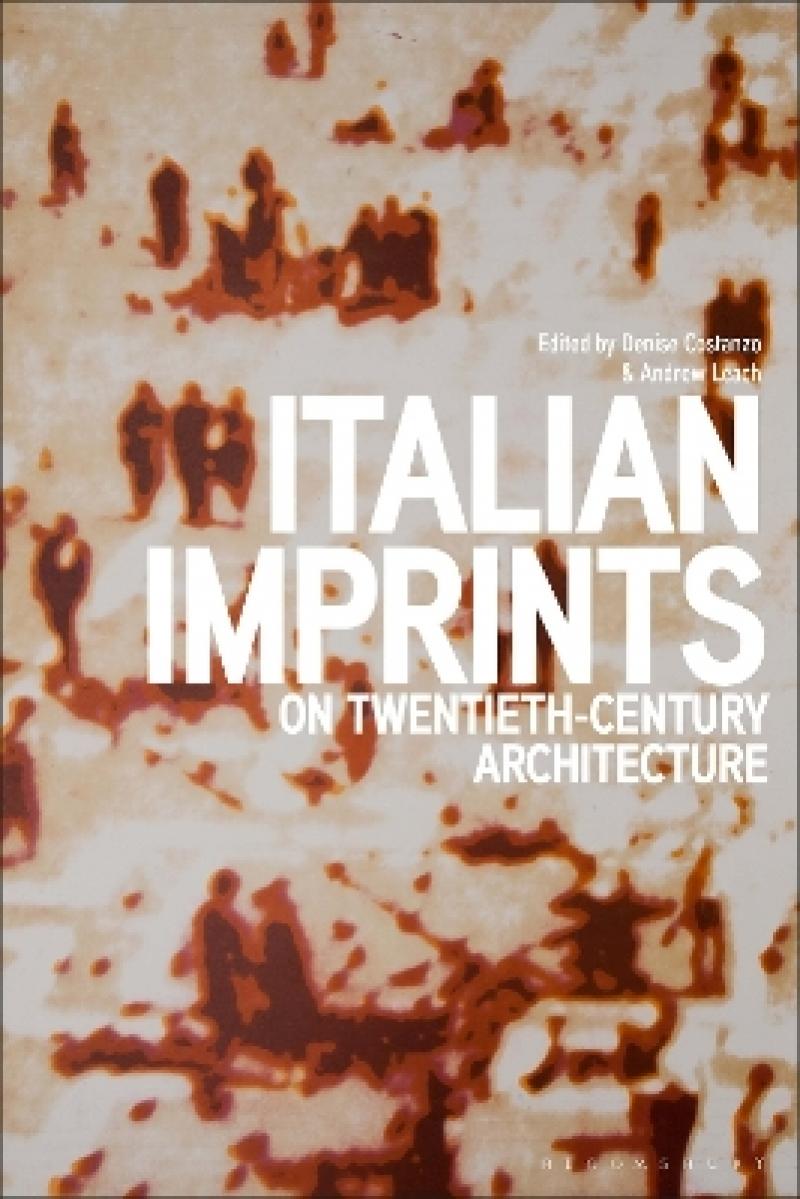This elegant collection challenges familiar ideas of how Italian sites and histories shaped 20th-century design theory worldwide. Inaugurating a set of provocative new questions, it stands to generate innovative architectural and scholarly debates for years to come.
Mia Fuller, University of California Berkeley, USA
At once origin of the Western conceptualization of architecture as a discipline and institution, home to buildings that have become hypercanonized, and arena of historiographical debates, Italy is an undeniable presence in architectural consciousness, whether it is embraced or rejected. From a variety of perspectives the essays in this volume enrich and complicate our understanding of Italy’s position in global architectural culture. Together they amount to a critical examination of ‘architecture’s vision of itself’ over the long 20th century.
Maarten Delbeke, ETH Zürich, Switzerland
Italian architecture has long exerted a special influence on the evolution of architectural ideas elsewhere - from the Beaux-Arts academy’s veneration of Rome, to modernist and postmodern interest in Renaissance proportion, Baroque space, and Mannerist ambiguity. This book critically examines this enduring phenomenon, exploring the privileged position of Italian architects, architecture, and cities in the architectural culture of the past century.
Questioning the deep-rooted myth of Italy within architectural history, the book presents case studies of Italy’s powerful yet problematic position in 20th-century architectural ideologies, at a time when established Eurocentric narratives are rightly being challenged. It reconciles the privileged position of Italian architecture and design with the imperative to write history across a more global, diverse, heterogenous cultural geography. Twenty chapters from distinguished international scholars cover subjects and architects ranging from Alberti to Gio Ponti, Aldo Rossi, Manfredo Tafuri, Vittorio Gregotti; cities from Rome and Venice to Milan; and an array of international architects, movements, and architectural ideas influenced by Italy. The chapters each question where, how, and why the disciplinary edifice of 20th-century architecture—its canon of built, visual, textual, and conceptual works—relied on Italian foundations, examining where and how those foundations have become insecure.
Indispensable for students and scholars of both Italian and global architectural history, Italian Imprints on Twentieth-Century Architecture provides an opportunity to consider the architectural and urban landscape of Italy from substantially new points of view.
List of Illustrations
List of Contributors
Acknowledgements
1. INTRODUCTION: IMPRINTS AND TRACKS, Denise R. Costanzo & Andrew Leach (Penn State University, USA) and Andrew Leach (University of Sydney, Australia)
2. THE ARCHITECT AS INTELLECTUAL, Jean-Louis Cohen (New York University, USA)
3. ITALIAN AFTERTHOUGHTS: TRANSCODING VENICENESS FROM WITHOUT, Giorgia Aquilar (University Institute of Architecture, Venice, Italy)
4. ITALY AS A METHODOLOGICAL TESTING GROUND FOR ARCHITECTURAL HISTORY, Raul Martinez (Polytechnic University of Catalonia, Spain)
5. FUNCTIONALISM AND ITS ITALIAN ENTANGLEMENTS, Ute Poerschke (Penn State University, USA)
6. THE ITALIAN RENAISSANCE AS REBIRTH AND RETURN, Caspar Pearson (University of Essex, UK)
7. FROM RENAISSANCE PRECISION TO COMPUTATIONAL UNCERTAINTY, Frank Bauer (Berlin University of the Arts, Germany)
8. THE HUMAN BODY AS A SPACE OF DIPLOMACY: STUDI SULLE PROPORZIONI AT THE IX MILAN TRIENNALE IN 1951, Federica Vannucchi (Pratt Institute, USA)
9. MODELS AND METHODS OF ARCHITECTURE AND CLIMATE, Daniel A. Barber (University of Pennsylvania, USA)
10. “SLOW DOWN YOUR KUNSTWOLLEN, YOUNG MAN”
OR, WHAT A PRACTICE IN BUILDING DECONSTRUCTION LEARNED FROM TUSCAN ARISTOTELIANISM, Lionel Devlieger (University of Ghent, Belgium)
11. ROBERT VENTURI AND NAPLES: THE COMPLEXITY OF THE SOUTH, Rosa Sessa (University of Naples Federico II, Italy)
12. GIO PONTI’S CLOUD OF AFFINITIES, Maristella Casciato (Getty Research Institute, USA)
13. MARKING, FRAMING, AND MEASURING IN VITTORIO GREGOTTI’S IL TERRITORIO DELL’ARCHITETTURA, Chris French (University of Edinburgh, UK)
14. ALDO ROSSI, GIORGIO DE CHIRICO, AND THE ENIGMA OF TRADITION, Diane Ghirardo (University of Southern California, USA)
15. FURNISHING FASCIST ITALY, Ignacio G. Galán (Barnard College, USA)
16. THE INTERNATIONAL CALL: ITALIAN DESIGN, CULTURE, POLITICS, AND ECONOMICS AT THE 1972 MoMA EXHIBITION AND BEYOND, Silvia Micheli (University of Queensland, Australia) and Lorenzo Ciccarelli (University of Florence, Italy)
17. APPROPRIATING ALDO ROSSI: THE DISPLACED AFTERLIFE OF L’ARCHITETTURA DELLA CITTÀ IN CHINA, Dijia Chen (University of Virginia, USA)
18. FROM THE UNIVERSAL TO THE PARTICULAR: ROBIN BOYD AND THE POSITIONING OF ITALY IN POST-WAR ARCHITECTURAL CRITICISM, Philip Goad (University of Melbourne, Australia)
19. UNEXPECTED PEDAGOGIES: HENRY HORNBOSTEL IN ITALY, 1893, Francesca Torello (Carnegie Mellon University, USA)
20. ITALIAN ROOTS IN LATIN AMERICAN ARCHITECTURAL HISTORY, Daniela Ortiz dos Santos (Goethe University, Germany)
Index
Produktdetaljer
Biografisk notat
Denise Costanzo is Assistant Professor of Architecture and Art History at the Pennsylvania State University, USA.
Andrew Leach is Professor of Architecture and Associate Dean (Research) of the School of Architecture, Design and Planning, at the University of Sydney, Australia.
